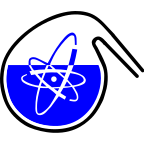Speaker
Description
The content of thorium (Th) on the earth's crust is three to four times higher than the uranium, so the idea of using thorium as the main component of nuclear fuel is currently developing.
In recent years High Energy Resolution Fluorescence Detected (HERFD) and Resonant Inelastic X-ray Scattering (RIXS) were shown to be a highly valuable tool for investigation of the electronic structure of actinides[1,3]. We have studied the electronic structure of several thorium systems by means of HERFD and RIXS and compared the results to X-ray photoemission spectroscopy (XPS) investigations. The research was conducted at Rossendorf Beamline at European Synchrotron Radiation Facility (ESRF), dedicated to actinide science. The recently upgraded ROBL beamline at the ESRF provides now a unique opportunity to study actinide materials by several experimental techniques: Extended X-ray Absorption Fine Structure (EXAFS), X-ray Absorption Near Edge Structure (XANES), HERFD, RIXS and X-ray diffraction techniques[2].
The recorded experimental spectral features were characterized using ab initio theoretical calculations (FEFF 9.6). The combined experimental and theoretical data provide a new insight into a fundamental understanding of thorium chemistry significant for topics of high societal relevance.
References:
[1] K.O. Kvashnina et al., Phys. Rev. Lett. 111, 253002 (2013).
[2] K. O. Kvashnina and A. C. Scheinost, “A Johann-type X-ray emission spectrometer at the Rossendorf beamline,” J. Synchrotron Radiat., vol. 23, no. 3, pp. 836–841, May 2016.
[3] S. M. Butorin, K. O. Kvashnina, J. R. Vegelius, D. Meyer, and D. K. Shuh, “High-resolution X-ray absorption spectroscopy as a probe of crystal-field and covalency effects in actinide compounds,” Proc. Natl. Acad. Sci., vol. 113, no. 29, pp. 8093–8097, Jul. 2016.

